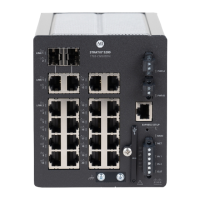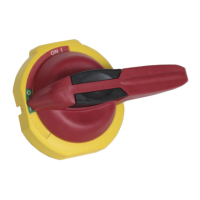Rockwell Automation Publication 1783-IN013B-EN-P - December 2019 11
Stratix 5800 Ethernet Managed Switches
Wire External Alarms
Alarm signals are connected to the switch through the six-pin alarm connector. Three connections are dedicated to the two alarm input circuits:
alarm input 1, alarm input 2, and a reference ground. An alarm input and the reference ground wiring connection are required to complete one
alarm input circuit. The three connections that remain are for the alarm output circuit: a normally open output, a normally closed output, and a
common signal. An alarm output and the common wiring connection are required to complete one alarm output circuit. The labels for the alarm
connector are on the switch panel and shown in the following table.
1. Remove the captive screws that hold the alarm connector on the switch, and remove the connector from the switch chassis.
2. Measure two strands of twisted-pair wire (16…18 AWG) long enough to connect to the external alarm device.
Choose between creating an external alarm input or output circuit.
3. Use a wire stripper to remove the casing from both ends of each wire to 6.3 mm (0.25 in.) ± 0.5 mm (0.02 in.).
Do not strip more than 6.8 mm (0.27 in.) of insulation from the wires. Stripping more than the recommended amount of wire can leave
exposed wire from the alarm connector after installation.
4. Insert the exposed wires for the external alarm device into the connections for an alarm input or output circuit setup.
For example, to wire an alarm input circuit, complete the IN1 and REF connections
5. Use a ratcheting torque screwdriver to tighten the alarm connector captive screw (above the installed wire leads) to 0.23 N•m (2.0 in•lb).
Label Connection
IN1 Alarm Input 1
REF Alarm Input Reference Ground connection
IN2 Alarm Input 2
NC Alarm Output Normally Closed (NC) connection
COM Alarm Output Common connection
NO Alarm Output Normally Open (NO) connection
Alarm Connector Captive Screws
2
1
1 External device connection 1 (IN1)
2 External device connection 2 (REF)

